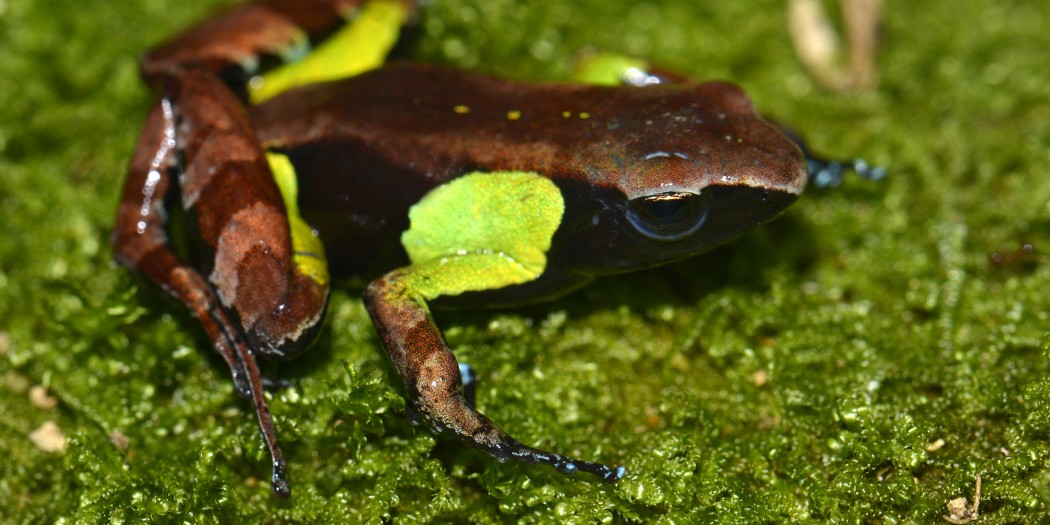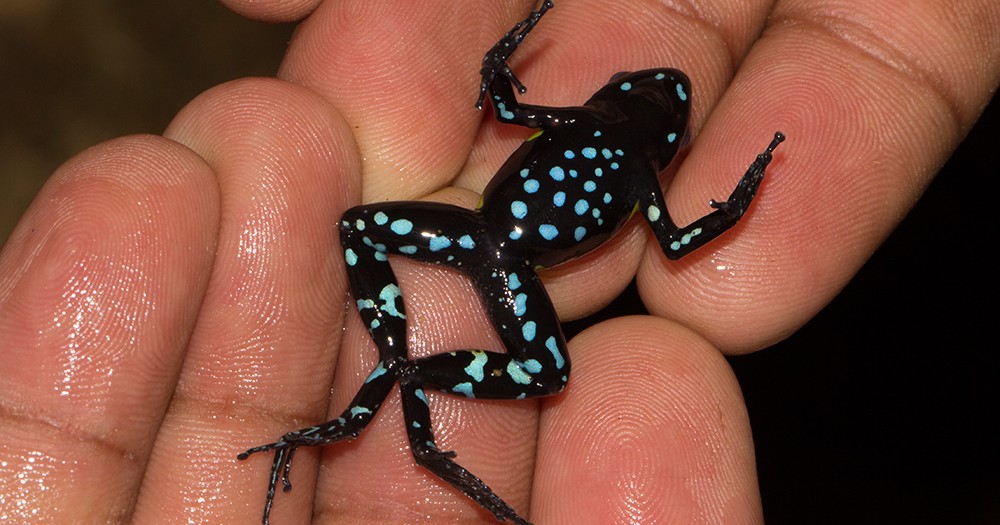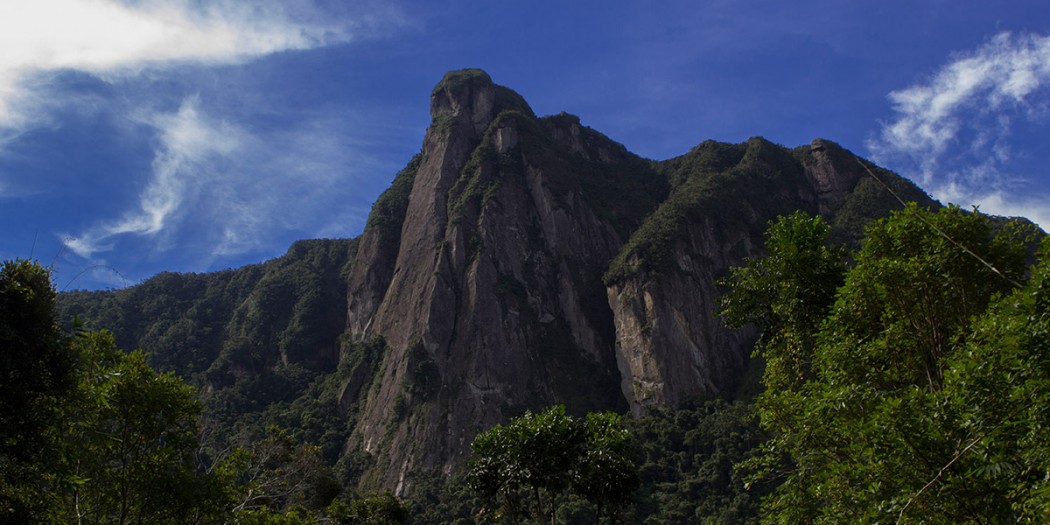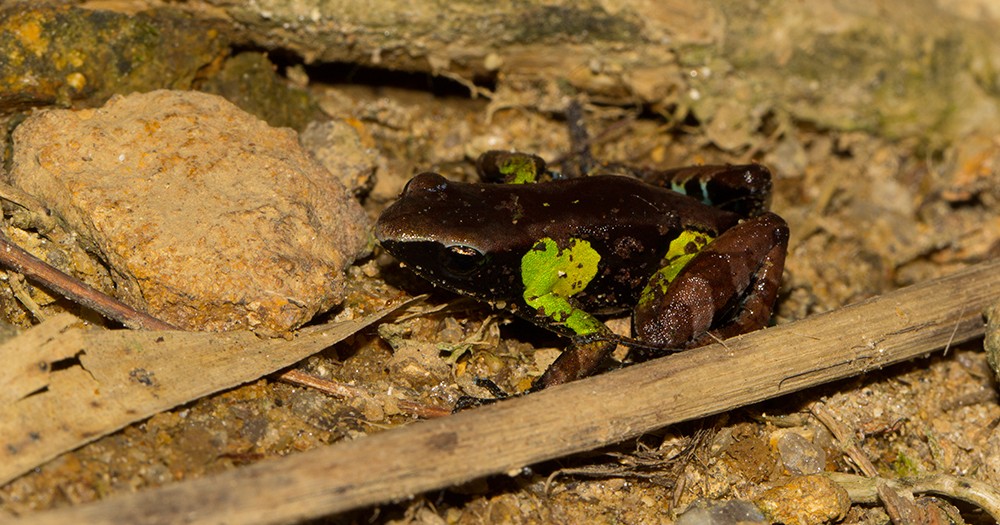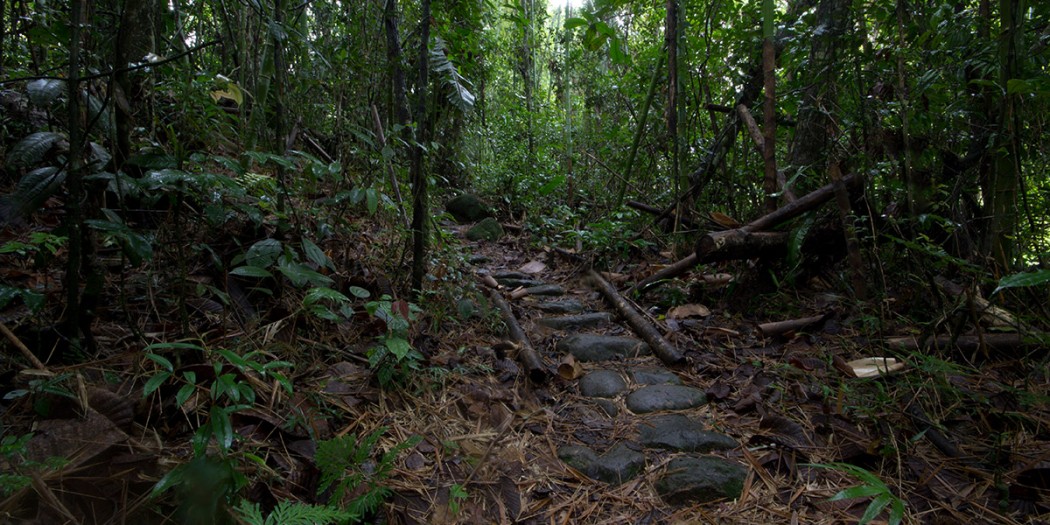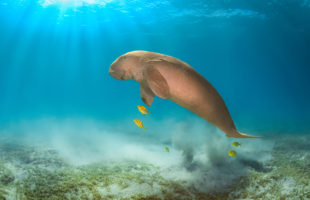You think poison dart frogs exist only at the Amazon? You are miles out! Madagascar has amphibians very similar to those, the Mantellas or coloured frogs. Like poison dart frogs, Mantella frogs produce a poison secreted via their skin, but it is completely harmless for human beings. Genetically, the Madagascan Mantellas are not related to poison dart frogs.
Mantella frogs are conspiciously colorful despite their small body size. One of these animals is Guibè’s mantella, scientifically called Mantella nigricans. This small frog derived its name by French herpetologist Jean Guibé, who did research on frogs and reptiles from 1950 to 1951 in Madagascar. But it was not before 1978, three years after Guibé got into retirement, that he described the frog for the very first time. For decades, scientists thought it to be a subspecies of Mantella cowani, a similar coloured frog. In the year of Guibé’s death, in 1999, German biologists proved Mantella nigricans to be an own species. Unfortunately, Guibé did not gain knowledge about this fact anymore.
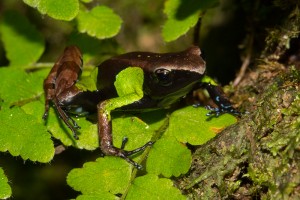
Guibé’s mantella comes from the primary rainforests of northwest Madagascar, and occurs in several national parks: Marojejy, Anjanaharibe-South, Manongarivo as well as Betampona and Tsararano are among its habitats. One can find it at elevations of 100 up to 1240 m, but it does not live close to the sea or in areas with many human settlements, cattle grazing or disturbed forest residues. Guibé’s mantellas live in the wet foliage, on mossy ground and along small streams. It measures less than three centimeters from the nose to its butt, but fascinates with its amazing bright green color on head, arms and legs as well as bright blue spots on the belly. The Latin name nigricans, which means as much as blackish in English, indicates this mantella wears more black in contrast to other mantella species.
Especially during rainy season, you can hear the males calling in the forests. After mating, the female lays about 30 whitish, spherical eggs, sometimes more, hidden in wet leaves. After one week, the small tadpoles hatch. Rain and humidity lead them to the nearby pond, where they develop until metamorphosis, during which they lose their tails and become terrestrial, as a ready Guibé’s mantella. They feed a whole lifetime on tiny ants, mites, flies and other insects.
Due to its beautiful colour and activity during daytime, Mantella nigricans has been a much sought-after animal for years in Europe, but offspring in captivitiy has been rare yet. Since some years, there exist no exports of this species anymore, probably attributed to its occurence mainly in protected areas. IUCN lists Guibé’s mantella as „least concern“ on its red list of threatened species. It is assumed that there are still relatively large populations of this lovely forester in Madagascar. But if you want to find it, you will need to be patient: Guibés mantella hides well in the forest, and despite the jazzy colour, these frogs are not easy to find.
 MADAMAGAZINE Your Magazine about Madagascar
MADAMAGAZINE Your Magazine about Madagascar
